The historical places in Poland hold a past that shaped not only the country but much of Europe. These sites are not built for show; they remain because people refuse to forget. At Auschwitz, silence says more than words. In Kraków, castle walls still carry traces of lost rule. These places are real and heavy with memory. A visit is not for entertainment but is a step into stories that still matter. Each stop offers something you will carry with you, long after the journey ends.
Top 10 Historical Places In Poland
These historical places in Poland have witnessed everything from royal triumphs to deep human loss. Each one offers insight, reflection, and a direct connection to the country’s past.
1. Wawel Royal Castle, Krakow
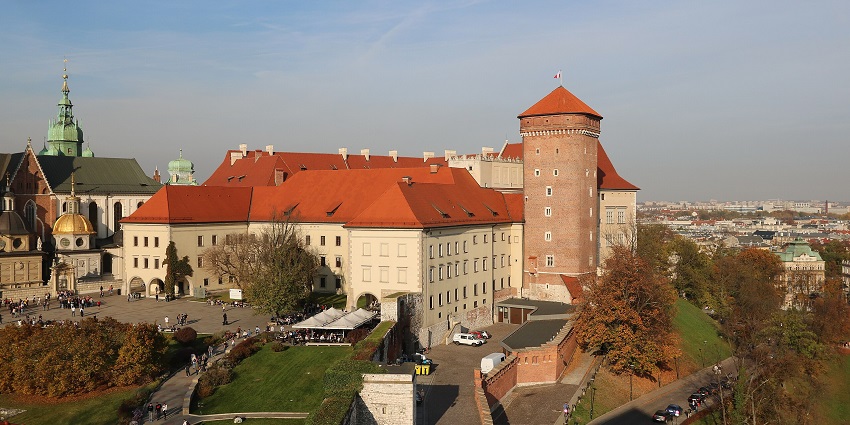
Photo: Ingo Mehling / Wikimedia Commons
Wawel Royal Castle is one of the most important historical places in Poland, sitting on a limestone hill above the Vistula River. In Kraków, it has stood at the heart of Polish history for nearly a thousand years and was once the official home of Poland’s kings. Today, visitors can explore rooms that still hold original tapestries, paintings, and weapons from the time of the Polish-Lithuanian Commonwealth. The site includes royal apartments, state halls, and the Crown Treasury, where the country’s regalia are kept. It also contains Wawel Cathedral, where monarchs were crowned and buried.
How To Reach: Located in Kraków’s Old Town, easily accessible by tram or on foot from the Main Square
Timings: 9 AM – 5 PM
Nearby Attractions: Wawel Cathedral, Kazimierz Jewish Quarter, Main Market Square
2. Auschwitz-Birkenau Memorial And Museum, Oswiecim
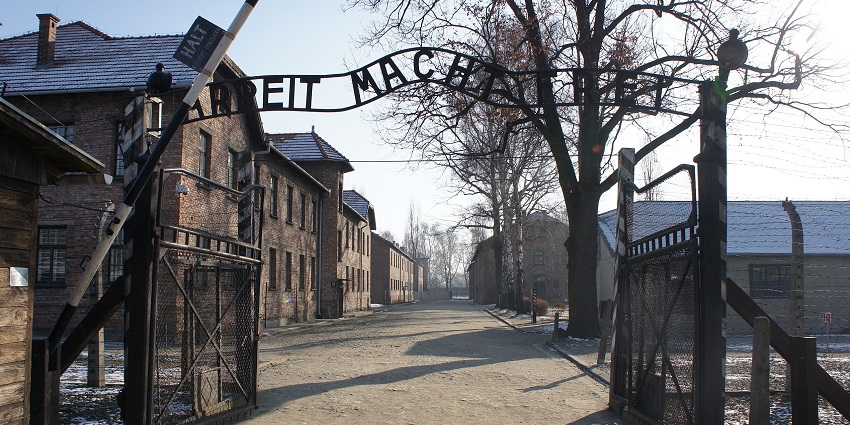
Photo: Bibi595 / Wikimedia Commons
In the small town of Oświęcim, Auschwitz-Birkenau was the largest Nazi concentration and extermination camp. It has Auschwitz I, the main camp; Auschwitz II-Birkenau, a camp with gas chambers and Auschwitz III-Monowitz, a labour camp. Over a million people were killed here during the Second World War. You can walk through the original prisoner barracks, see the remains of gas chambers, and view photographs and personal belongings that have been preserved. The museum presents the facts clearly and without distortion. Every structure and item has been kept to show the truth as it was. It is not a place made for display; it exists so people will not forget. The experience is direct and often very quiet. Auschwitz-Birkenau is one of the most difficult yet necessary historical places in Poland to visit.
How To Reach: About 1.5 hours from Kraków by train or bus to Oświęcim; museum shuttle available
Timings: 7:30 AM – 6 PM
Nearby Attractions: Jewish Centre Oświęcim, St. Mary’s Church, Oświęcim Castle
3. Malbork Castle, Malbork
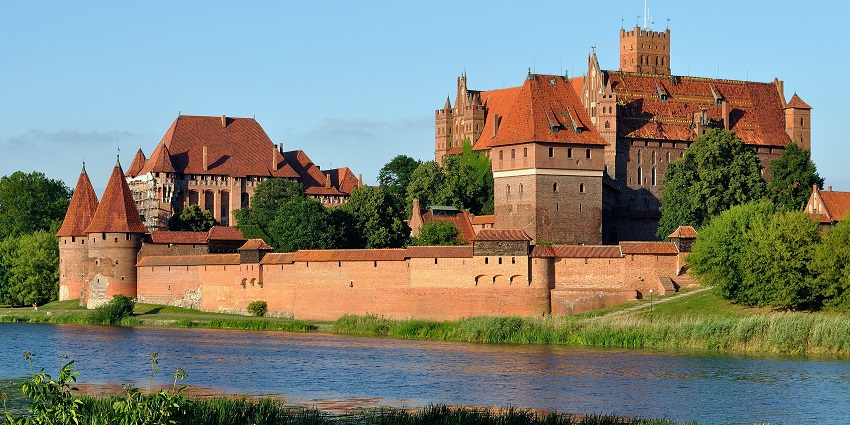
Photo: DerHexer / Wikimedia Commons
Malbork Castle is one of the largest brick structures ever built and remains one of the most impressive historical places in Poland. It was founded in the 1200s by the Teutonic Knights, who used it as a military base and administrative centre. Later, it became part of the Polish Crown and was used by the kings for defence and storage. The castle is divided into three main sections: the High Castle, the Middle Castle, and the Palace of the Grand Masters. Visitors can walk through large halls, courtyards, and towers that were once used for meetings, worship, and everyday life. Inside are displays of medieval tools, religious items, and amber, which was traded across the Baltic. Much of what you see today was carefully rebuilt after damage in the Second World War, using bricks recovered from the ruins. The layout and structure still reflect how it was used centuries ago.
How To Reach: Direct trains from Gdańsk (1 hour); the castle is a 10-minute walk from the station.
Timings: 9 AM – 7 PM
Nearby Attractions: Nogat River Promenade, Malbork Park, DinoPark
4. Warsaw Old Town
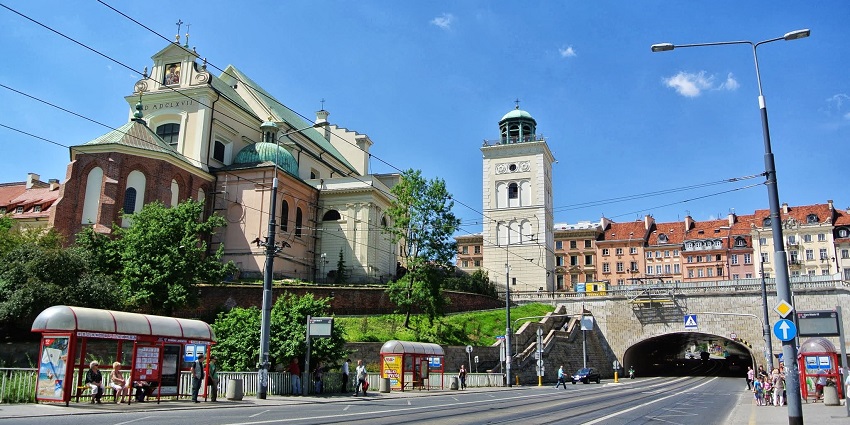
Photo: Ben Bender / Wikimedia Commons
Warsaw Old Town is one of the most visited historical places in Poland, known not just for its charm but for its recovery. Most of it was destroyed during the Second World War. What stands today is a complete reconstruction based on old paintings, drawings, and memories of those who lived there. The work was done with care and later the area was listed as a UNESCO World Heritage Site. The Market Square is the heart of the Old Town surrounded by colourful buildings, cafes, and small museums. The Royal Castle sits nearby, rebuilt using fragments of the original structure. Visitors can walk the narrow lanes, visit churches, and explore the city’s past layer by layer.
How To Reach: Located centrally; walkable from Warsaw Central Station or a short tram ride
Timings: 24*7
Nearby Attractions: Royal Castle, Sigismund’s Column, Krakowskie Przedmieście
5. Wieliczka Salt Mine
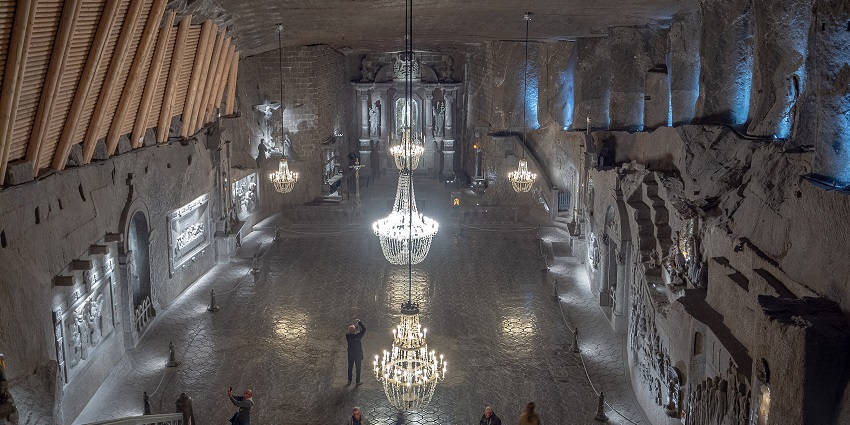
Photo: C messier / Wikimedia Commons
Wieliczka Salt Mine is one of the most unusual historical places in Poland, located just outside Kraków. It operated continuously from the 13th century until 1996, making it one of the oldest salt mines in Europe. Inside, visitors follow a guided path that takes them through tunnels, chambers, underground lakes, and chapels, each one carved from rock salt. The most famous is the Chapel of St. Kinga, a large room with detailed salt sculptures, chandeliers, and a carved altar. Miners created much of what is seen today, often working by candlelight. Over time, the mine became a symbol of hard labour, faith, and craftsmanship.
How To Reach: 30 minutes from Kraków by train or bus; 10-minute walk from Wieliczka Rynek station
Timings: 8 AM – 5 PM
Nearby Attractions: Żupny Castle, Saltworks Museum, St. Kinga’s Chapel
6. Jasna Gora Monastery, Czestochowa

Photo: Ebielmaj / Wikimedia Commons
Jasna Góra Monastery, located in Częstochowa is known for its strong link to Polish faith and identity. It is one of the most visited historical places in Poland which has been a pilgrimage site since the 1300s. The monastery houses the icon of the Black Madonna, a painting believed to protect the country. In the 17th century, monks and local defenders stopped a Swedish siege here, turning the monastery into a national symbol. Visitors can walk through the main basilica, the Chapel of the Virgin, and the treasury, which holds royal gifts and historic offerings. The grounds are quiet but always active, with pilgrims arriving every day. Many come for prayer, while others visit to understand the monastery’s role in Poland’s story.
How To Reach: Direct trains from major cities like Warsaw and Kraków; 15-minute walk from station
Timings: 5:30 AM – 9:30 PM
Nearby Attractions: Częstochowa Museum, St. Barbara’s Church, Park Staszica
7. Gdansk Crane And Medieval Port
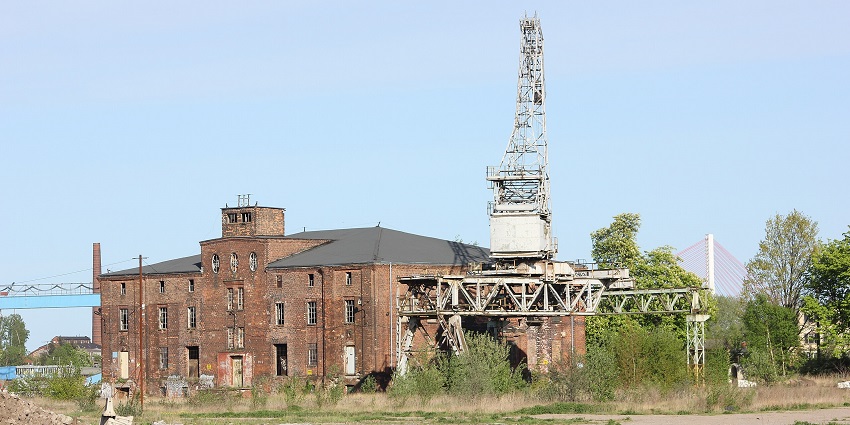
Photo: Andrzej Otrębski / Wikimedia Commons
The Gdańsk Crane is one of the most recognisable historical places in Poland along the Motława River in the heart of the old port. Built in the 15th century, it was once used to load goods and fit ship masts. The wooden mechanism inside was powered by workers walking inside giant wheels, like human hamsters. It stood as the largest port crane in Europe for centuries and was central to Gdańsk’s role in the Baltic trade. Today, it is part of the National Maritime Museum. Visitors can walk through the restored structure and learn how trade shaped the city’s growth. The surrounding area, filled with warehouses, merchant homes, and cobbled streets, gives a strong sense of what the city looked and felt like in medieval times.
How To Reach: Walkable from Gdańsk Główny station; buses and trams available
Timings: 10 AM – 6 PM
Nearby Attractions: Long Market, St. Mary’s Church, Neptune Fountain
8. Zamosc Old Town
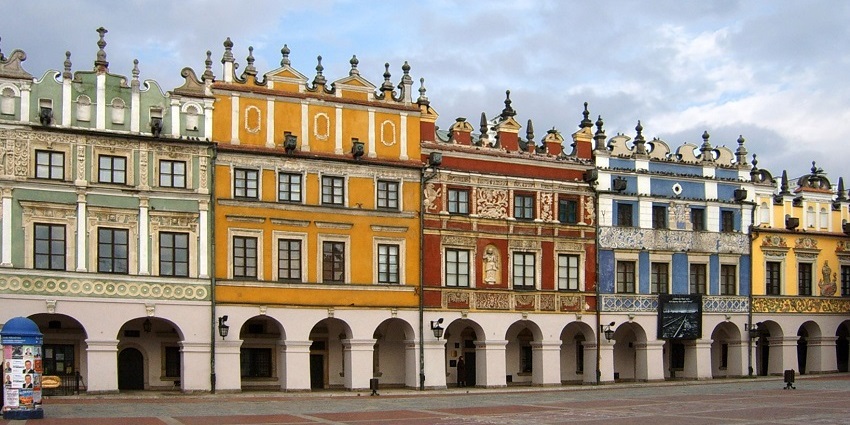
Photo: MaKa / Wikimedia Commons
Zamość Old Town is one of the few historical places in Poland that was built from scratch with a clear plan. It was designed in the late 1500s by Bernardo Morando, an Italian architect hired by Jan Zamoyski. The idea was to create a city that worked as both a fortress and a place for trade and culture. The streets were laid out in straight lines, with covered walkways and a large square at the centre. That square is still there surrounded by buildings in soft colours and a town hall with a tall tower and stone steps. Most of the old layout and buildings have been kept just as they were. Visitors can walk along the walls, go into old armouries that now hold museums, and see churches that were part of the original plan.
How To Reach: Buses available from Lublin or Warsaw; nearest train station: Zamość
Timings: 9 AM – 5 PM
Nearby Attractions: Zamoyski Palace, Rotunda Zamojska, Great Market Square
9. Torun Old Town
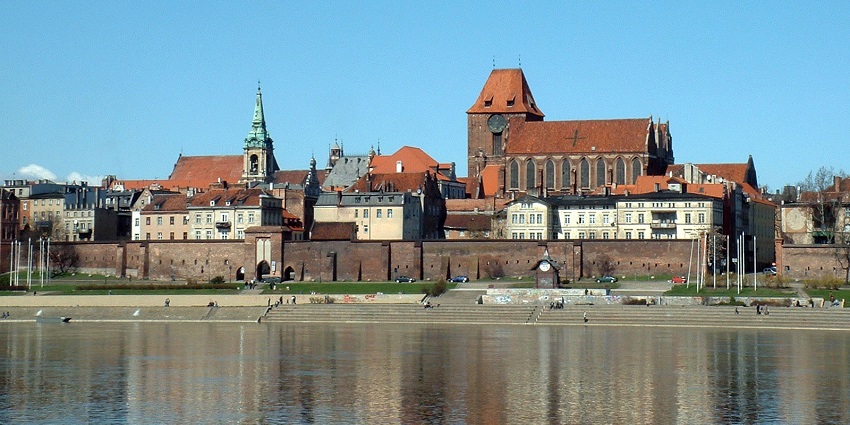
Photo: René Klein / Wikimedia Commons
Toruń Old Town is one of the most well-preserved historical places in Poland, with its layout and buildings dating back to the medieval period. The city was founded by the Teutonic Knights in the 13th century and quickly grew into a major centre of trade along the Vistula River. The Old Town is known for its Gothic churches, brick townhouses, and narrow cobbled streets. One of the main landmarks is the house where astronomer Nicolaus Copernicus was born, now turned into a museum. The town hall, city walls, and Leaning Tower also give a strong sense of how life looked here hundreds of years ago. What makes Toruń unique is how much of its past still remains untouched.
How To Reach: Direct trains from Warsaw and Gdańsk; walk from Toruń Miasto station
Timings: Open year-round
Nearby Attractions: Copernicus House, Toruń Cathedral, Leaning Tower of Toruń
10. Biskupin Archaeological Site

Photo: Patrik Kunec / Wikimedia Commons
Biskupin is one of the earliest historical places in Poland, located in the countryside near Żnin. It dates back over 2,700 years. The site was discovered in 1933 when a local farmer found wooden beams in waterlogged ground. Excavation revealed a well-organised Iron Age settlement. The village had rows of wooden houses, a grid of straight streets, and thick timber walls built for defence. The wet soil had preserved many parts of the structure. A portion of the site has been carefully rebuilt. The work was done using tools and materials similar to those used thousands of years ago. Visitors can walk through the rebuilt section and see the original layout clearly. The houses are simple, made from logs and there is a museum displaying pottery, tools, and other items found during the dig.
How To Reach: Located in Żnin County; access by bus or car from Bydgoszcz
Timings: 9 AM – 6 PM
Nearby Attractions: Żnin Narrow Gauge Railway, Lake Biskupińskie, Wenecja Castle Ruins
The historical places in Poland are not just parts of the past; they are still part of the present. Each site holds a different layer of the country’s story, from early settlements and royal courts to war memorials and restored towns. These are places built with purpose, shaped by history, and kept alive through care and memory. Visiting them offers more than a look at old walls or monuments. It gives a better understanding of how Poland came to be what it is today. Let them show you Poland not as a destination but as a story told through cities, stones, and people who still remember. Plan your visit through TripXL and explore Poland’s history one place at a time.
Cover Photo: Ben Bender / Wikimedia Commons


 WhatsApp
WhatsApp
 Twitter
Twitter









